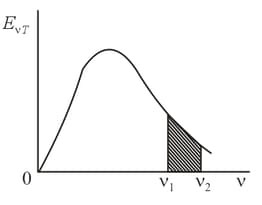Natural light with intensity passes through two Nicol prisms whose transmission planes are at an angle to each other. After the light has passed through the second prism, it falls on a mirror, is reflected by the mirror, and passes through the two Nicol prisms once more. What is the intensity of the light that has travelled this path?



Important Questions on Optics
When a source of light moves toward the observer, the optical Doppler effect manifests itself. The curves in the ligure depict the dependence of the perceptible frequency of the light on the speed of the source of light, with one curve corresponding to the results predicted by classical theory and the other. to the results predicted by the theory of relativity: The ratio of the speed of the source to the speed of light is laid off on the horizontal axis, while the ratio of the perceptible frequency to the frequency of the light emilter hy the source (i.e. of a fixed somrec is laid off on the vertical axis. Which curve correspomis lo which theory?
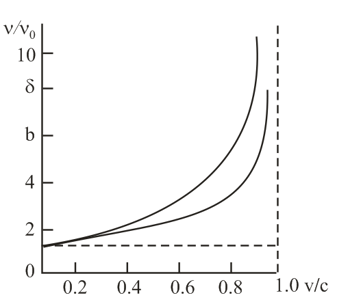
The figure depicts the same spectral line emitted by a gas at different temperatures. The wavelength is laid off on the horizontal axis, while the ratio of the inten-sity at a given wavelength to the maximal intensity at a given temperature is laid off on the vertical axis. Which curve corresponds to a higher temperature?

Two objects having the samc shape and size but different absorption coefficients (immisivities) are heated to the same temperature and placed in a vacuum. As a result of emission of radiation the objects cool off. The curves in the figure show the change in temperature in the process of cooling. The cooling-off time from the moment the objects were placed in the vacuum is laid off on the horizontal axis, while the temperature of the objects is laid off on the vertical axis. Which curve characterizes the object with a higher absorption coefficient and which, with a lower absorption coefficient?
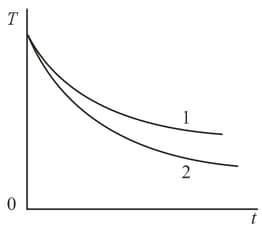
Two separate segments of equal area are isolated in the energy distribution of blackbody radiation. Are the emissive powers over the respective wavelength intervals the same? What about the number of emitted photons in each segment?
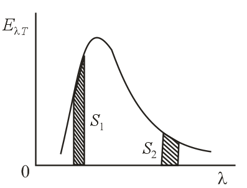
A student has sketched the curves representing the energy distribution in the emission spectrum of blackbody radiation for two temperatures as shown in the figure. What mistake did the student make?
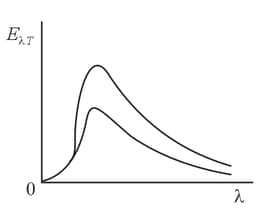
Determine the volume density of the energy of blackbody radiation over the frequency range from to . The radiation function is laid off on the vertical axis.
